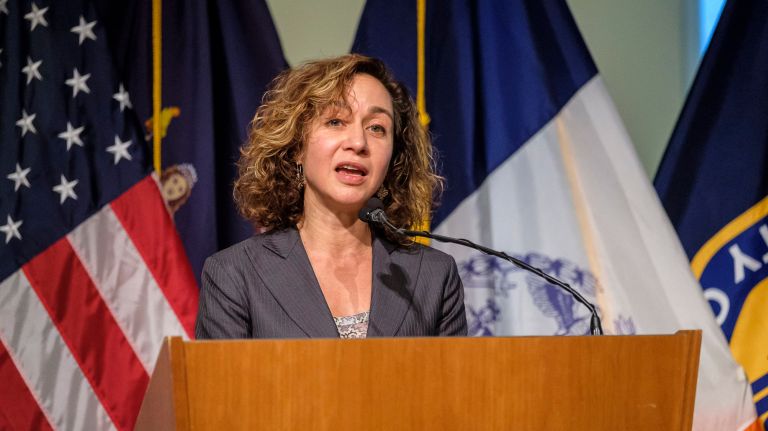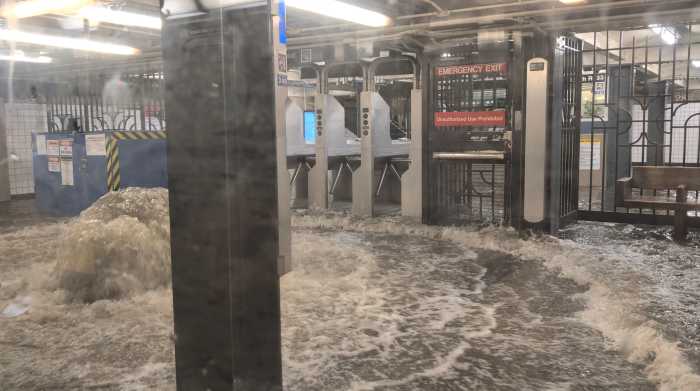
New York City’s Taxi & Limousine commissioner joined advocates Monday in calling Gov. Andrew M. Cuomo’s congestion surcharge “devastating” for an already reeling yellow cab industry.
The measure will add surcharges to any yellow cab, e-hail or other for-hire vehicle trips that start, pass through or end in a designated “congestion zone” below 96th Street in Manhattan beginning Jan. 1. The state estimates it will generate about $400 million a year for the financially strapped MTA.
But the mechanism of the surcharge has left cabbies and the city crying foul. Yellow cabs will have to add $2.50 to the meter per trip while companies like Uber and Lyft will have to collect $2.75 per trip. But e-hails will have greater options to mask the surcharge by tweaking trip costs and the surcharge in those vehicles will be reduced to 75 cents for any shared trip request — even if the driver doesn’t end up picking up more than one passenger.
“The fact that it will cost $5.80 to step into a taxi cab now is going to be devastating for the taxi industry,” TLC Commissioner Meera Joshi said after a City Council oversight hearing on the surcharges, referencing the existing fees on taxi trips. “The other sectors … have more flexibility. They have to add $2.75 on but they’re not bound to a metered fare, so they can reduce the price of the trip so that the passenger doesn’t feel the effect of the $2.75.”
Pooled taxi trips, requested through third-party app services, will also be eligible for the $2 discount, though those trips only account for a small fraction of yellow cab rides, which are still predominantly hailed on the street.
The concerns come after eight TLC-licensed drivers have committed suicide in 2018 — a disturbing trend advocates attribute to the financial hardships of an industry that has been upended in recent years by the introduction of Uber, Lyft and other e-hail companies. The deaths have spurred more focus on policy for the industry; last summer, New York became the first major American city to temporarily cap the number of for-hire vehicles on its streets.
The New York Taxi Workers Alliance — one of Uber’s biggest critics in the city — called for a surcharge exemption for yellow cabs.
“Albany is crushing a sector and workforce that has contributed to MTA funding all these years, while rewarding a business model that is directly trying to gut MTA ridership and is directly responsible for the congestion choking our streets,” said NYTWA Executive Director Bhairavi Desai.
E-hail and black cars do pay state and city sales tax on top of the fare, as well as a state commuter tax that together come out to 8.875 percent charge. Aliz Anfang, a spokeswoman for Uber, said in a statement that "the best way to increase demand for yellow taxis — as well as other forms of transportation including the subway — is to support comprehensive congestion pricing and have personal vehicles and trucks pay their fair share to drive through midtown and downtown."
It’s not clear what the congestion surcharge, cooked up by Cuomo’s Fix NYC panel as part of a more comprehensive congestion pricing proposal, would do to reduce traffic volumes on its own. Traffic expert and congestion pricing proponent Charles Komanoff doesn’t expect it will do much.
“It will be very small — somewhere between, at best, modest; at worst, imperceptible,” Komanoff said.
He has called for robust congestion pricing proposal for all cars entering the most congested parts of Manhattan as well as charges on yellow cabs and e-hail vehicles driving in the congestion zone without passengers.
Joshi said she’s also interested in "looking at flexible solutions that reflect more about penalizing empty cars circulating in the congestion zone — so you’re penalized and you’re paying for the exact act that you’re trying to prevent. And I think that’s much more focused and probably fair in the end."
"It was a very blunt surcharge that was put on there — and I do believe the state is open to looking at it again in conjunction with congestion pricing generally,” Joshi said.
Tyrone Stevens, a spokesman for Cuomo, said in a statement that the governor "will continue to work with legislature to evaluate this surcharge and pass comprehensive congestion pricing once and for all" when the legislature reconvenes in January. The funds from a congestion pricing plan would go toward funding the MTA’s Fast Forward plan to modernize subway, bus and accessibility services.
"The legislature passed and the governor signed a congestion surcharge as the first phase of the Fix NYC plan and the first step in establishing congestion pricing within New York City, which is the most realistic way to help fund [the] modernization plan," Stevens said.





































